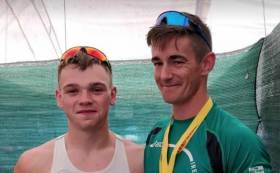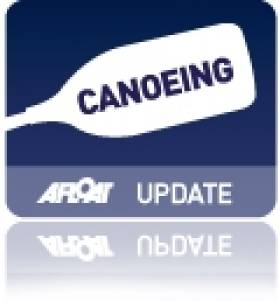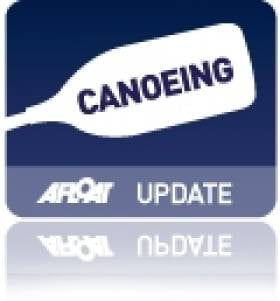Displaying items by tag: sprint
#Canoeing: Ronan Foley produced another promising result at the canoe sprint World Junior and Under-23 Championships in Plovdiv in Bulgaria. The Ireland paddler won the B Final of the junior men’s K1 500 metres. He had also won the B Final of the K1 1,000 metres. He placed 10th overall in both K1 500 and K1 1,000.
Canoe Sprint Junior World Championships, Plovdiv, Bulgaria (Irish interest)
Men, K1 500m – B Final (Places 10 to 19): 1 Ireland (R Foley) 1 min 41.398 sec.
#Canoeing: Ronan Foley won the B Final of the Junior K1 1,000 metres at the Canoe Sprint World Junior and Under-23 Championships in Plovdiv, Bulgaria, today. The Kilcullen man had over two seconds to spare over his nearest rival, Philip Miles of Britain. The win places him 10th overall.
Just three weeks ago, Foley took gold in the canoe marathon European Championships in Croatia.
Canoe Sprint World Junior Championships, Plovdiv, Bulgaria
Junior K1 1,000 – B Final (Places 10 to 18): 1 Ireland (R Foley) 3 min 38.463 sec.
B Final Place for Jezierksi at Canoe Sprint World Championships
#CANOEING: Andrzej Jezierski finished sixth in his semi-final of the men’s C1 200m at the Canoe Sprint World Championships and will compete in tomorrow’s B Final in Moscow. Peter Egan and Simas Dobrovolskis were seventh in their semi-final of the men’s K1 200m and will go to the C Final. Jenny Egan made her exit from the K1 200m, as she finished eighth in her semi-final, and finished 11th in the women’s 5,000 metres. Jenny Burke placed 4th in the B final of the K1 1,000m, 13th overall.
Canoe Sprint World Championships, Day Four (Irish interest, selected results)
Men
K2 200m – Semi-Final: 7 P Egan, S Dobrovolskis 34.004.
C1 200m – Semi-Final (First Three to A Final; next Three to B Final; rest out): 1 Lithuania 38.320; 6 A Jezierski 39.638.
Women
K1 – B Final (Places 10 to 18): 4 J Burke 3:05.18.
K1 200 – Semi-Final: 8 J Egan 43.097.
K1 5,000 – Final: 1 Britain 23 mins, 10.957 secs; 11 J Egan 24:08.510
K1 Sprint Head-to-Head in Prosperous Next Weekend
The Irish Canoe Union will host a sprint head-to-head regatta in Kildare next weekend.
All canoeists in classes K1 200m and 500m are welcome to take part in the event, on the Grand Canal in Prosperous on Saturday 26 March starting at 10.30am.
Heats will be seeded based on previous regatta performances and personal best times. The event finals will then be decided on fastest time from heats.
Entries are open till 8pm on Wednesday 23 March. Entry forms are available via the Canoeing Ireland website.


























